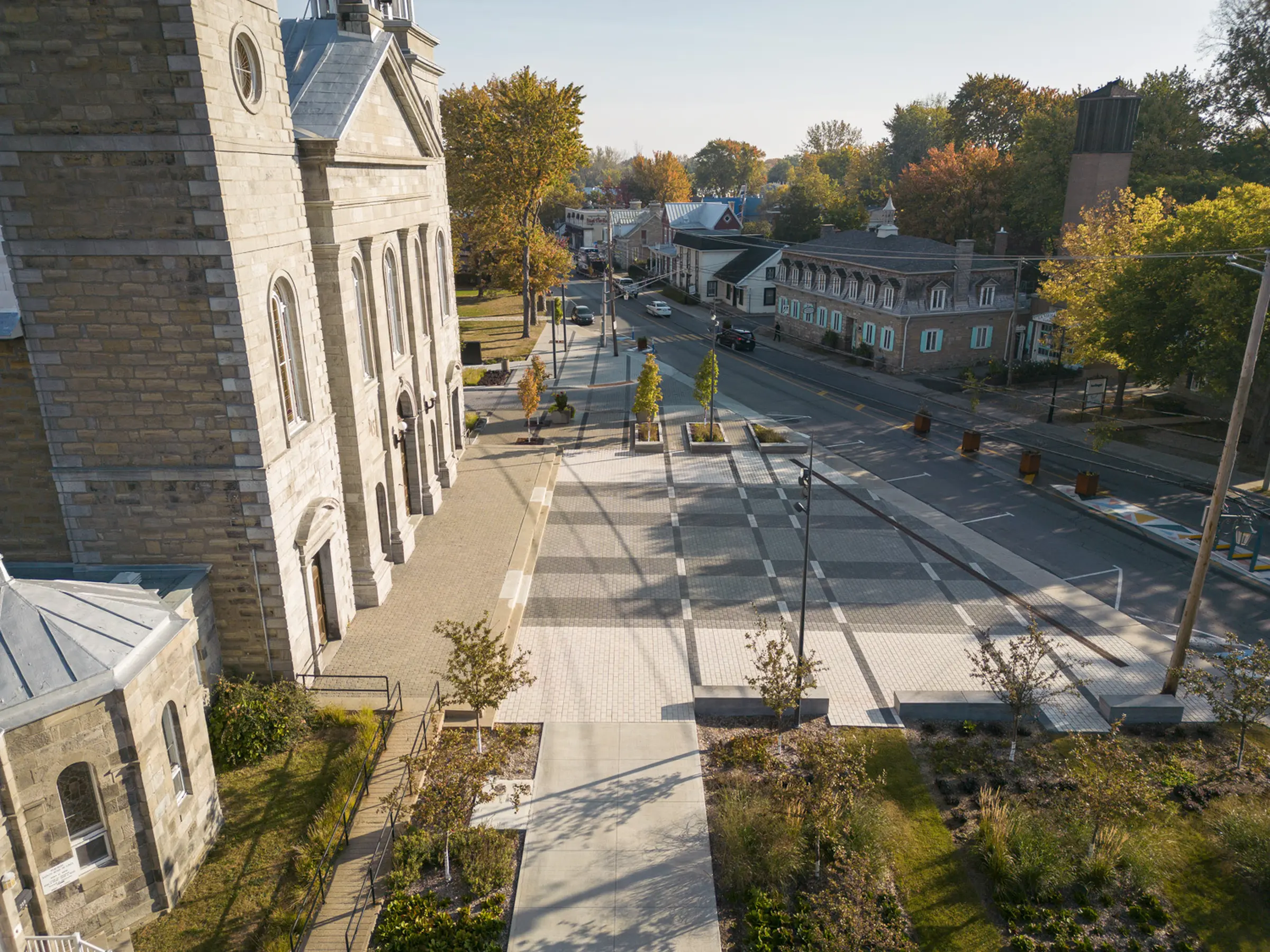Reimagining a riverbank while honouring the history that lies beneath: this was the challenge we faced in the neighbourhood of Vieux Sainte-Rose in Laval, where the river, church and collective memory have intertwined for more than a century.
From the moment we were entrusted with the Berge des Baigneurs project, it was clear that this place held more than development potential — it held memory. The memory of a village shaped by the river, early 20th-century vacation cottages, beaches, and sheltered swimming spots, all watched over by the familiar silhouette of the Sainte-Rose-de-Lima church.
Among Laval’s waterfront parks, the Berge des Baigneurs stands out for its naturally picturesque character. Our goal was to rekindle that charm, to reintroduce the space to the public through an approach that is both thoughtful and contemporary.
Linking riverbanks, connecting communities
Our initial mandate in 2016 was to develop a master plan. This vision came into sharper focus in 2018 with the launch of the first phase, built around a twofold objective — to create a true visual and physical gateway to the riverbank, and above all, to revitalize the Sainte-Rose-de-Lima church grounds, a symbolic neighbourhood landmark. Situated where Sainte-Rose Boulevard meets the river access, the church plays a central role in both the community and in the surrounding landscape. The project also involved rethinking the design of the forecourt, improving the functionality of its parking area, and exploring its potential to serve as a key anchor point in a pathway connecting heritage, nature and public life. The transformation had to respond to the needs of three key stakeholders: the Vieux Sainte-Rose parish council, Villemaire school and the City of Laval.
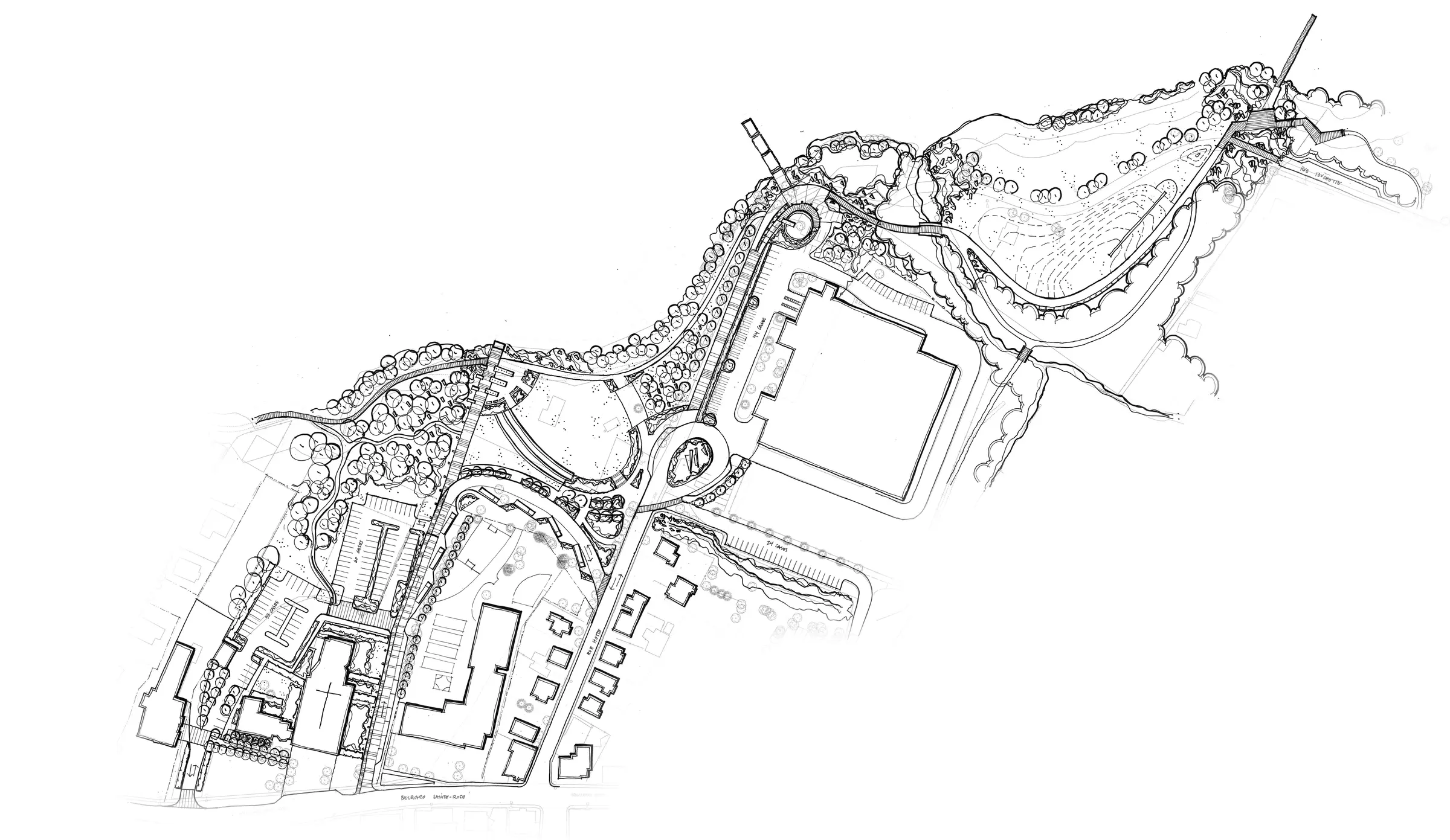
©Gianna Cabanas
This project is part of the City’s broader vision: to enhance its entire waterfront network and connect the riverbanks from east to west. Laval is home to 27 kilometres of shoreline (information in French), with 15.7 kilometres currently open to the public — valuable land worth showcasing.
A discovery buried beneath our feet
In 2020, an unplanned preventive archaeological excavation uncovered ancient artifacts, religious relics and even human bones, from a former parish cemetery. This unexpected discovery altered the project approach. Rather than building over these artifacts, we worked to integrate them.
Stéphanie Lavallée, bioarcheologist
«The City completely changed course, adding a concrete slab to safeguard the site and the graves still resting beneath our feet.»
Preserving these elements in situ while moving forward with the development required innovation. Working with technical teams, we opted for shallower foundations, specifically designed to respect the integrity of the buried relics. The parking area, for its part, was built on a structure made of ultra-high-performance concrete, a solution guided by the same commitment to preservation. This structure, comparable to a slender structural bridge, allowed us to create a new surface without disturbing the archaeological ground. The paving stones laid on top, quite literally, let history breathe. Crosses, subtly embedded into the surfaces, delineate the outline of the old church — a simple gesture full of meaning.
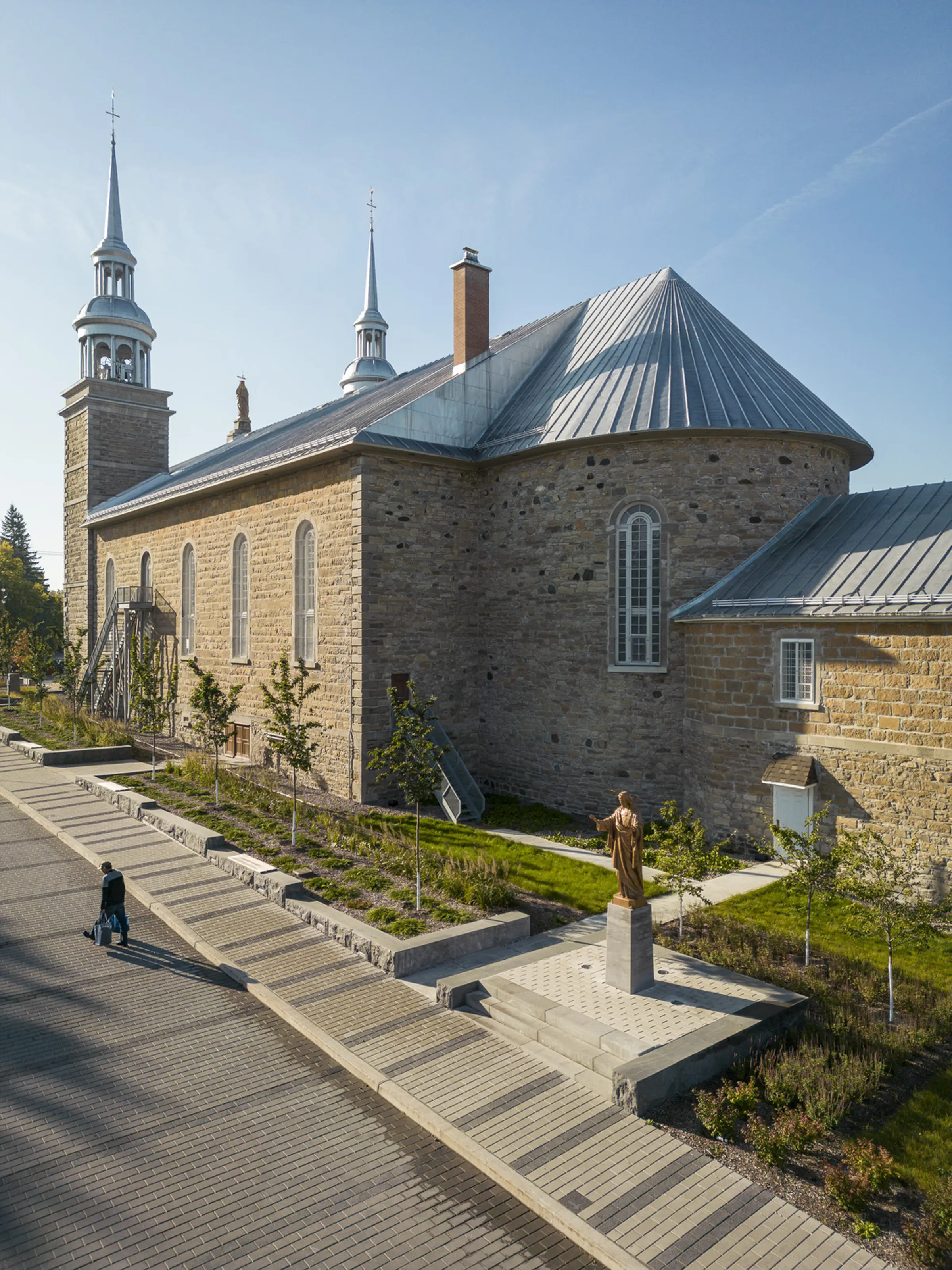
©Vincent Brillant
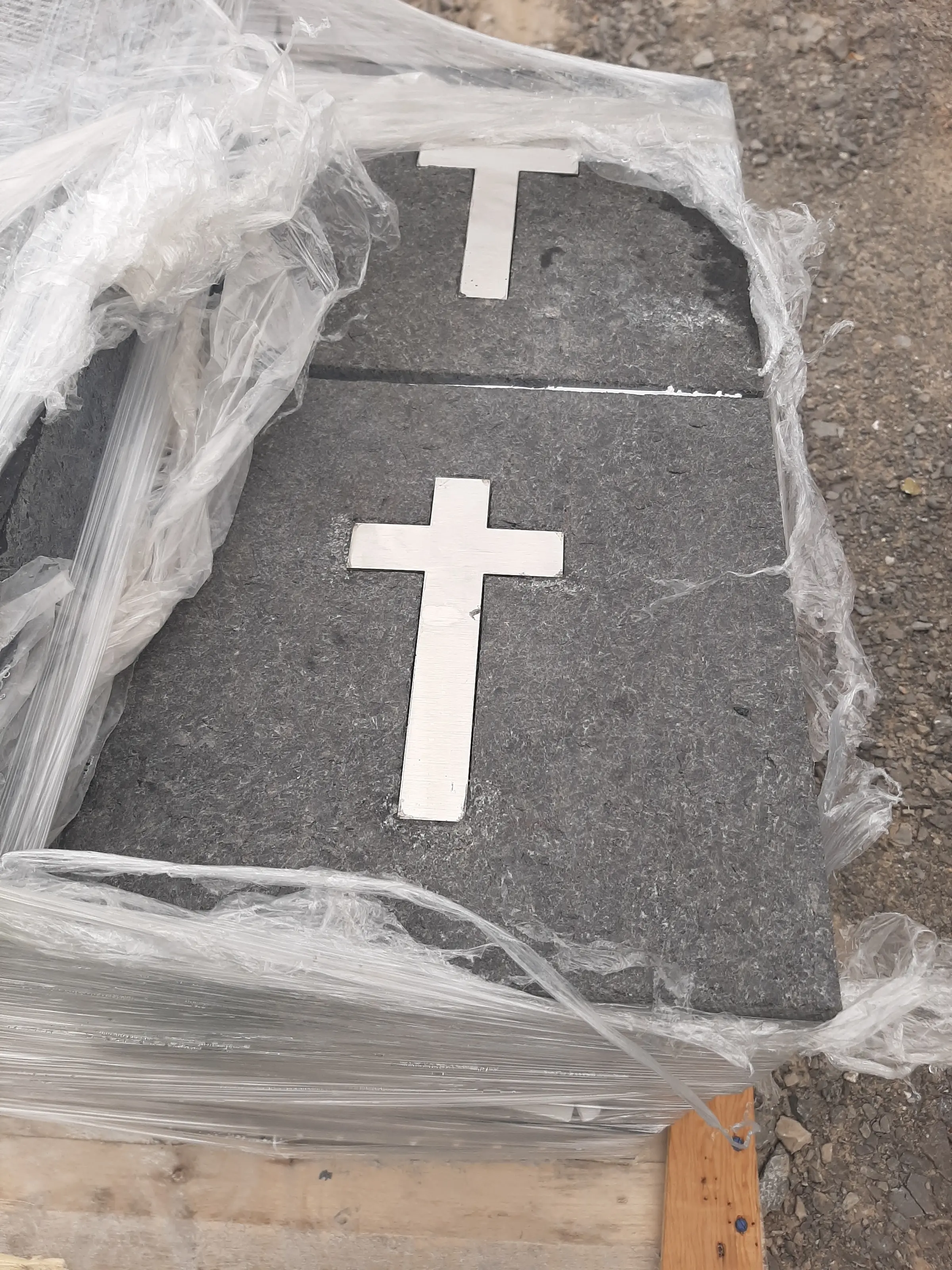
©Projet Paysage
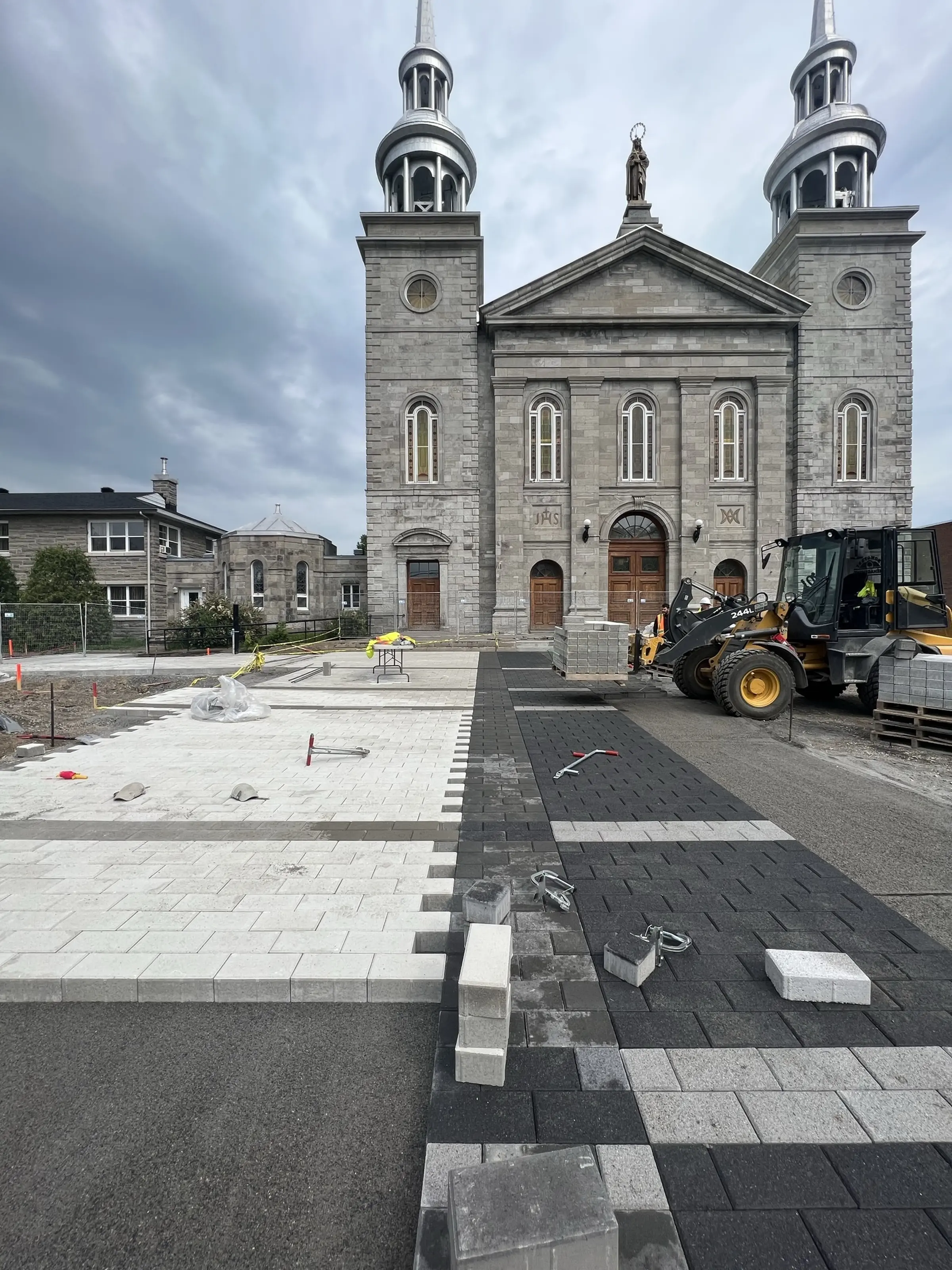
©Projet Paysage
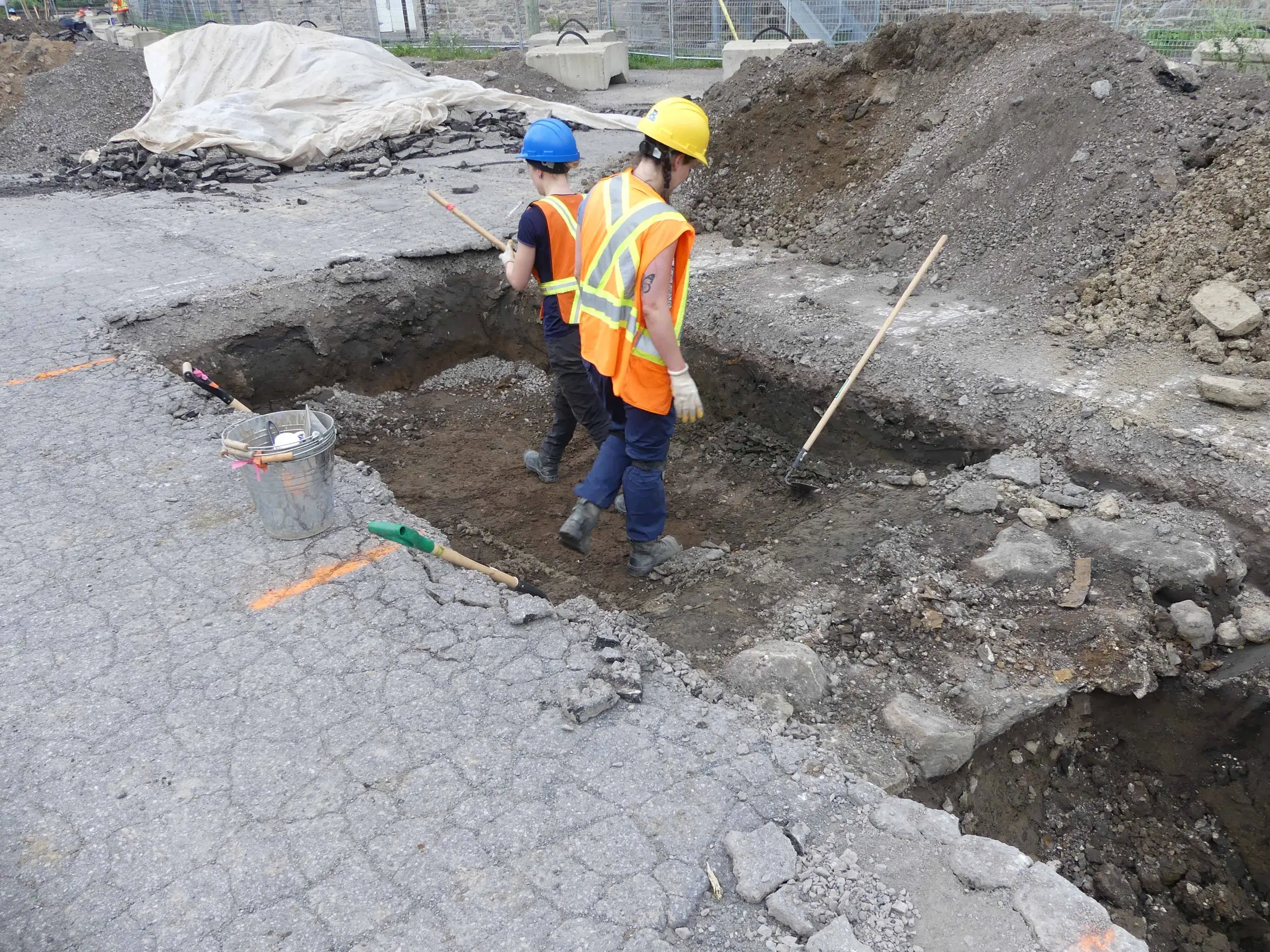
©Projet Paysage
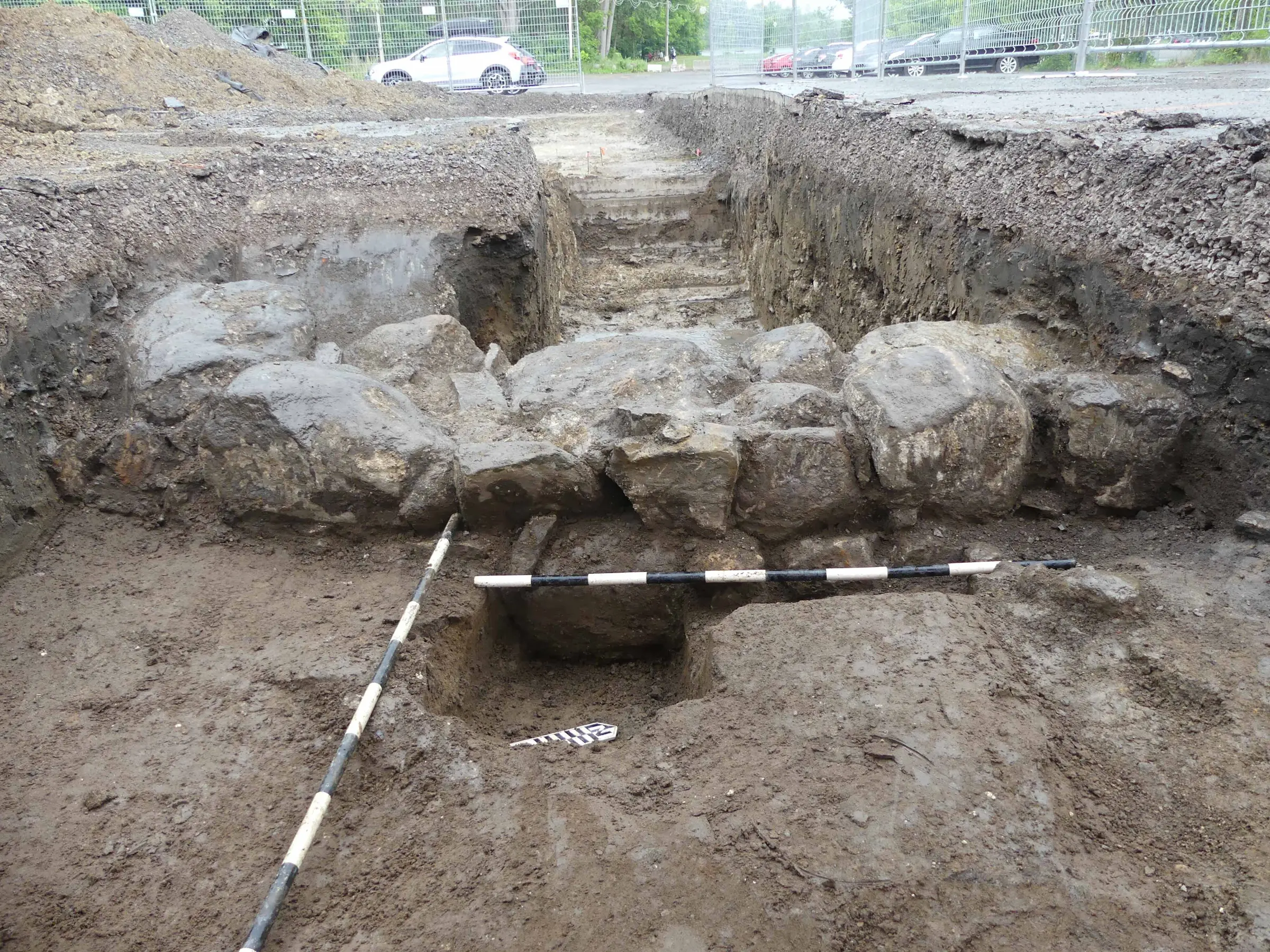
©Projet Paysage
The church: The spiritual and unifying heart of the site
The Sainte-Rose-de-Lima church remains the cornerstone of the project. Rather than compete with its presence, our design was carefully oriented to showcase it. Its forecourt now serves as a true stage: a place of gathering, celebration, and moments of transition. The paving pattern, inspired by an unfurled rug, subtly extends the architectural lines of the façade; white echoes the bell tower’s supporting columns.
The sacred nature of the place is underscored by a path dotted with religious sculptures, which invite contemplation. As night falls, the illuminated façade becomes both a visual beacon and emotional landmark.

©Maude Pellerin
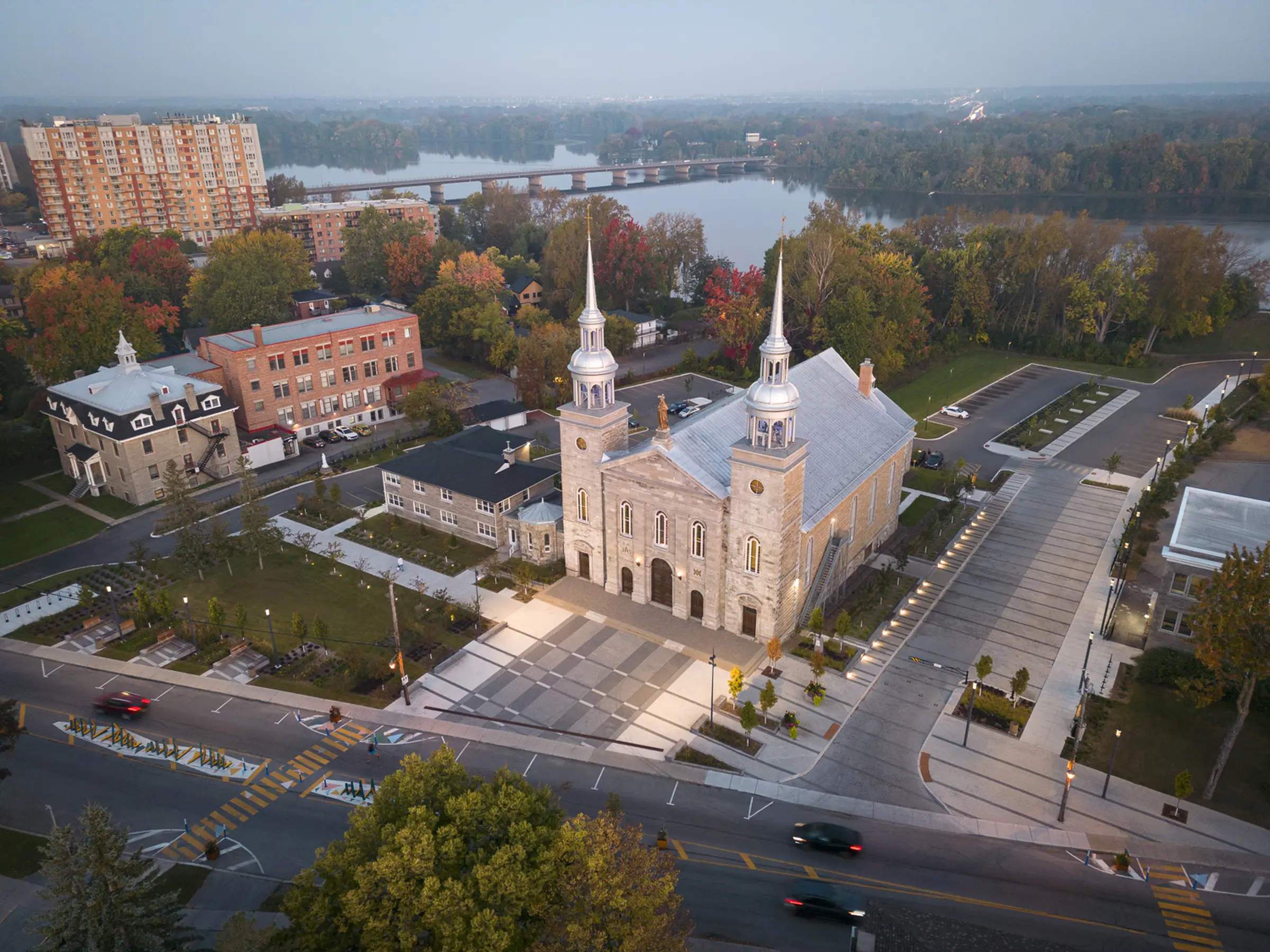
©Vincent Brillant
The premises also serve the needs of the community. A discreet alley allows for the passage of hearses, preserving the ritual continuity of the church grounds. To the east, the parking area and traffic lane transform into a public square during seasonal markets and major events such as the Symposium de Sainte-Rose, a vibrant summer arts festival.
Pedestrian paths lead visitors between trees, rest stops and planted green spaces. The water, once a draw for vacationers, is now reclaiming its central role within the site.
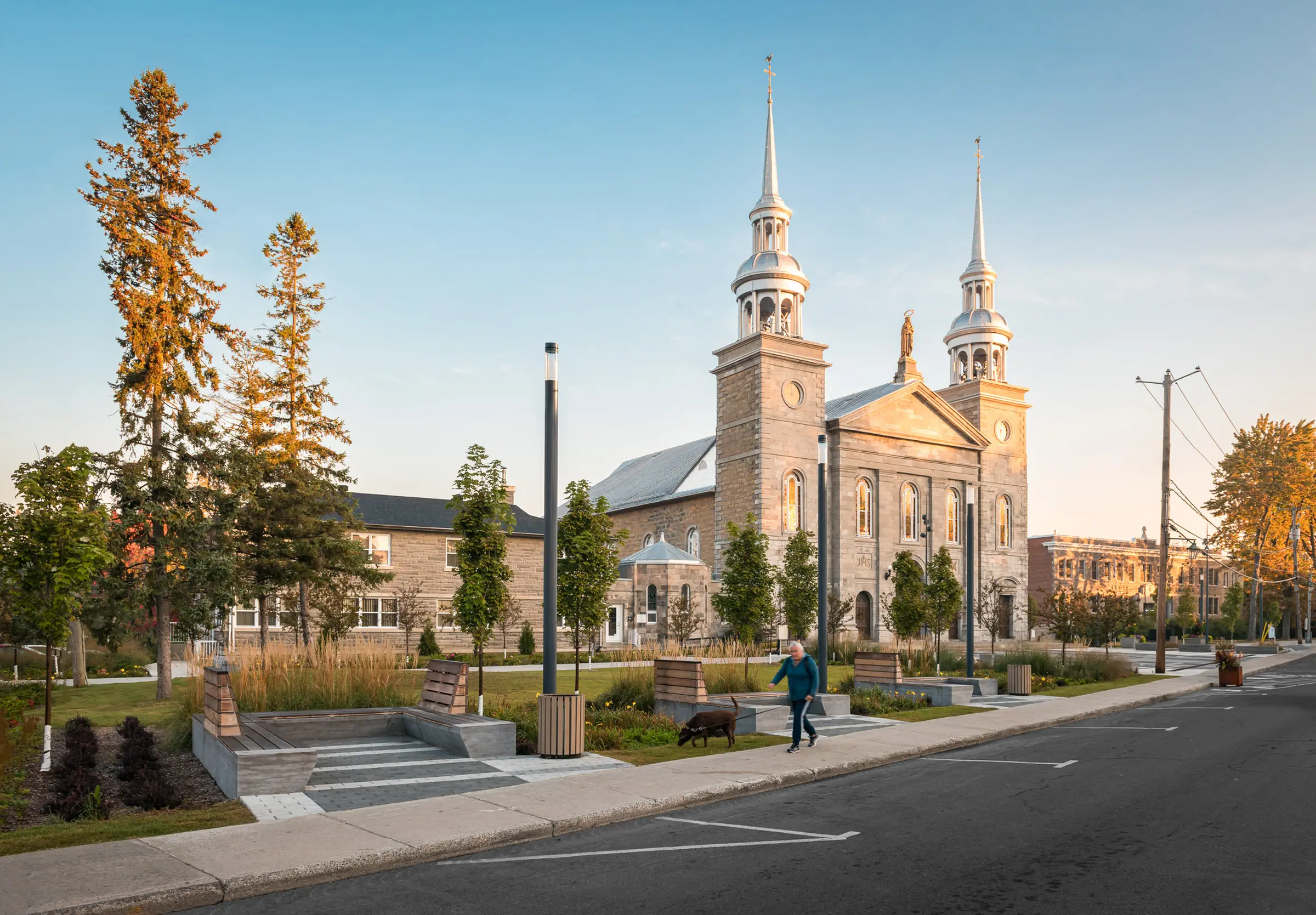
©Vincent Brillant
A dialogue between nature and the past
Greening plays a vital role in this spot. It punctuates the walking path, reinforces local biodiversity and invites a slower pace. Green lounges have been created along Sainte-Rose Boulevard and an alley of crabapple trees, the symbolic tree of presbyteries, recalls the location’s historic function. The understated furniture, created from local Laval rocks and the landscape platforms offer visitors a place to rest in a soothing atmosphere.
Beyond its ecological benefits, this thoughtful approach enhances the area’s cultural significance — allowing nature to serve as a bridge between past and present.
Reimagining the Berge des Baigneurs meant weaving together heritage and modernity, history and use. It was about honouring the value of the remains and artifacts while responding to the needs of local communities.
We had the privilege of supporting this transformation with the hope that everyone who walks these grounds can feel the living thread that connects memory to the future.
